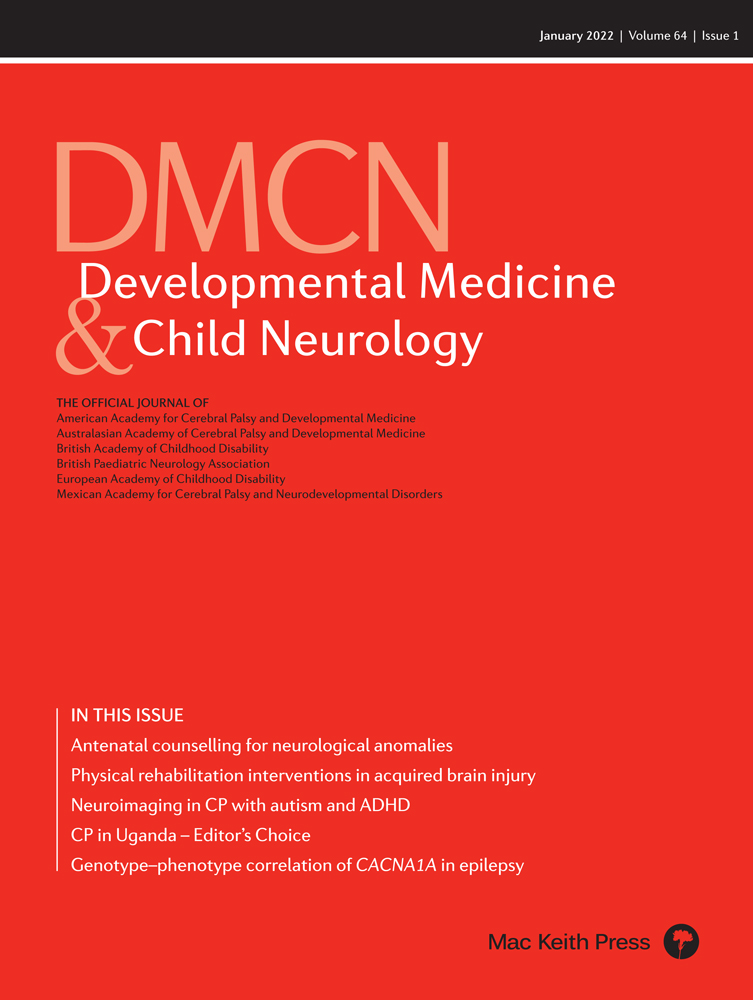Overcoming the barriers to care for children with neurodevelopmental disorders
Abstract
This commentary is on the original article by Cloet et al. on pages 88–94 of this issue.
Currently, there is no ‘cure’ for neurodevelopmental disorders (NDDs), but there are therapeutic strategies and medications to help control signs and symptoms, and optimize individuals’ developmental trajectory.1 Children and young people with NDDs are cared for and treated by multidisciplinary teams including therapists, pediatricians, psychologists, primary care professionals, educators, and allied healthcare professionals. The different types of care and treatments are delivered by these multiple professionals within a number of disciplines that include physiotherapy, speech therapy, ophthalmology, pediatrics, psychiatry, psychomotor therapy, occupation therapy, and neuropsychology, among others.2
Cloet et al.3 present the results of research commissioned by the Flemish authorities to improve the diagnostic evaluation of children in Flanders with a suspected NDD. These results are meaningful in terms of global health for professionals involved in NDD diagnostics, care, treatment, as well as for developing and strengthening health sectors to provide equitable, integrated, interdisciplinary, and holistic services.
Cloet et al. state that the barriers to accessing care for children with NDDs include financial inequalities, age exclusion, and long waiting times for diagnosis. These problems could be solved by increasing clinicians’ pre-service knowledge of NDD symptoms for rapid referral, making services free for the vulnerable, and by strengthening the referral system.
The authors argue that delayed accessibility to diagnostic assessment for children with NDDs is also a result of a lack of collaboration between the different expert organizations working in the field. This lack of interorganizational collaboration poses a challenge in addressing the needs of patients throughout their treatment. Furthermore, they also criticize the rarity of routine diagnostic assessment during the patient's trajectory as another barrier for patients to access services. The current diagnostic assessment processes are not standardized and are performed according to regulations of the expert organization in the field. This article also points out that the assessments are limited activities, once at the beginning of care and only repeated according to the specific regulation of organizations involved in NDDs.
For better services the authors recommended harmonizing the diagnostic process across expert organizations, team-based working practice through interorganizational collaborations, interdisciplinary approaches, and diagnostic assessments conceptualized as standardized routine practice all along the patient’s trajectory.
Although this paper only explores one region of a small, high-income country and does not include private practice organizations, it provides useful recommendations for health sectors in other contexts because globally, NDDs are a neglected problem. Currently, 80% of the children with NDD are found in low- and middle-income countries (LMICs), where 90% percent of the world’s children live.4 This neglect is evidenced by the increase in the prevalence of developmental disabilities (including attention-deficit/hyperactivity disorder, autism, functional impairment, and other learning disorders) in children under 5 years by 71.3% in Sub-Saharan Africa and by 7.6% in North Africa and globally around 52.9 million children are affected.5
The article by Cloet et al. explains how this would improve childcare around the world, specifically in LMICs that face the highest shortage of human resources and NDD risk burden.
If LMICs educate professionals, standardize regulations for transdisciplinary, integrate approaches for diagnostics, and use iterative assessments to adapt the care and treatment to the clinical and life context evolutions, they will catalyze the process to build a stronger health sector with more equity and efficiency for children living with NDD.




